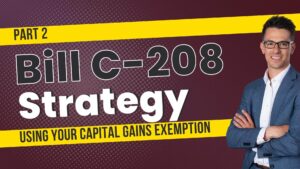[vc_row][vc_column][vc_column_text css=”.vc_custom_1665601800315{padding-top: 20px !important;padding-bottom: 20px !important;}”]With the recent decline in stock markets, some of you have called looking to take advantage of this drop and buy low. The one question that comes up in every conversation is:
“I know I should buy when stocks are down, but should we wait until things start to look better before investing?”
This is a fair question. Nobody wants to buy and then watch their portfolio decline, but there is one issue with this question…
What’s the definition of look better?
Does look better mean “when markets are rising?” Or does look better mean “when markets have dropped further?”
If your definition of markets looking better means markets are rising, then no, you shouldn’t wait to invest. You’ll have missed the run-up. In this scenario, for markets to look better, they must be higher than they are today. You want to invest when markets are low so that you can capture the upside.
If your definition of markets looking better means – when markets have dropped further, then yes, in theory, you should wait to invest until markets “look better.” However, what guarantee do you have that markets will continue to drop?
You might say, “Well Colin, it’s pretty obvious markets will continue dropping; just listen to the news.”
True, the news does like to paint a negative picture. So let’s say we use this strategy – we use the news as our guide of when to invest. Should we wait for the news story that says, “We have hit the bottom; it is now a good time to start investing.”
I don’t think we’ll ever see this news report. News networks have a negative bias because we humans are more attracted to negativity than positivity. I don’t blame the networks for this, they are running a business, and they need to keep our attention so they can sell advertising space.
Past Examples
Let’s go back to December 29th, 2008 – the financial crisis. Investors have just experienced one of the worst years on record. Banks are going bankrupt, markets are down over 40%, and here’s the story that The Wall Street Journal ran that day “As if Things Weren’t Bad Enough, Russian Professor Predicts End of U.S.” Yes, this is one of America’s most influential newspapers, and they’re running a story about how the U.S. will collapse. If you read the article, it basically says America is about to collapse into six pieces and be disintegrated by 2010.
Suppose you’d been waiting for the news to give you a clue as to when you should be investing. Would this have been the day you’d bought low? I’m guessing probably not.
But for fun, let’s say you had invested $100,000 that day in the U.S. stock market in the form of an S&P 500 index fund (XSP.TO). Twelve months later, you’d been looking at an account with $126,007 in it (+26.07%). Today, that same $100,000 investment would be worth over $377,000 (+277.00%).[/vc_column_text][dt_fancy_image image_id=”9079″ width=”1000″ css=”.vc_custom_1665600976129{padding-top: 20px !important;padding-bottom: 20px !important;}”][vc_column_text css=”.vc_custom_1665601014797{padding-top: 20px !important;padding-bottom: 20px !important;}”]Source: YCharts
So… what should you do?
The absolute simplest advice – Markets are down over 25%, now is a great time to buy.
There’s no need to get fancy. Take advantage of the dip and let the market do what it’s always done – recover and hit new all-time highs. Buying into a market that’s down 25% guarantees you a 33% upside when markets recover.
Happy Investing![/vc_column_text][/vc_column][/vc_row]









